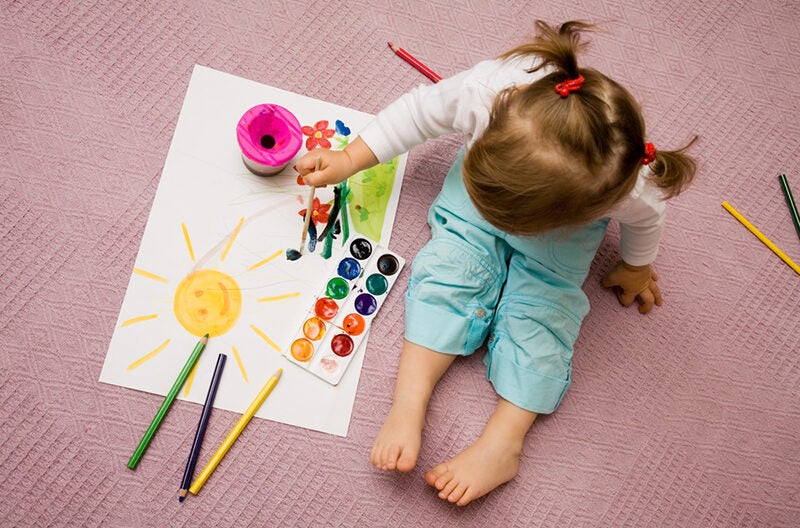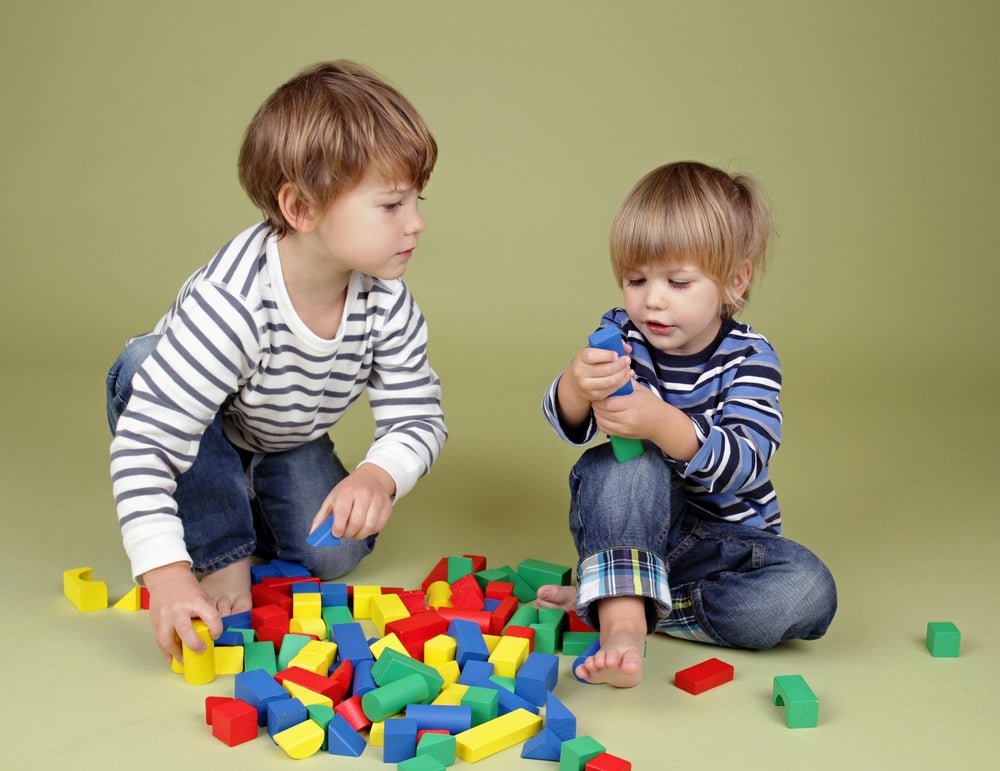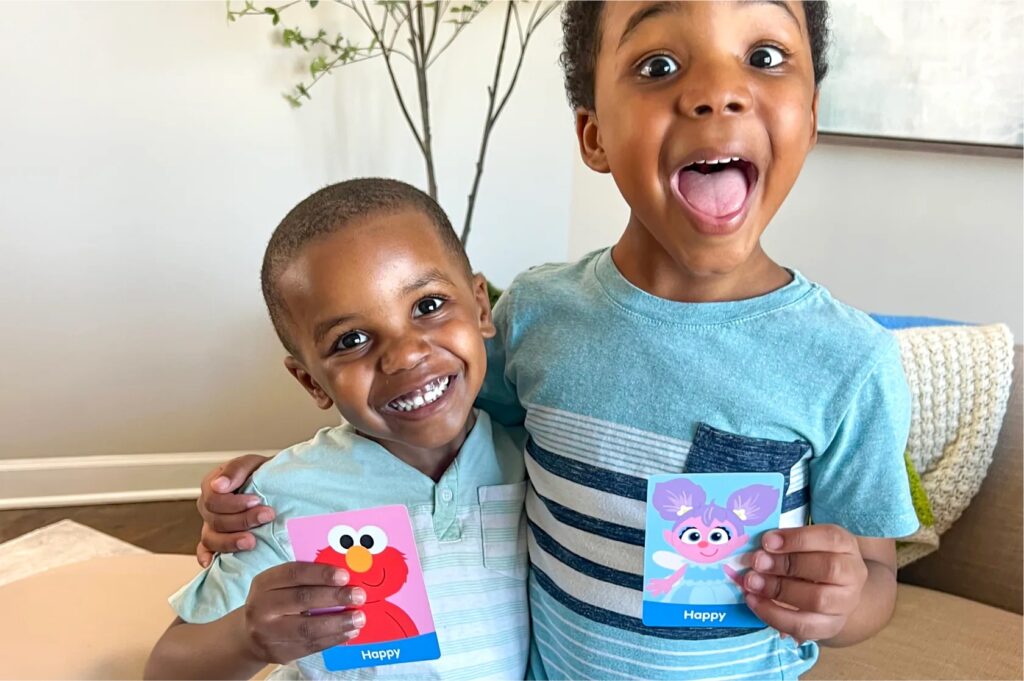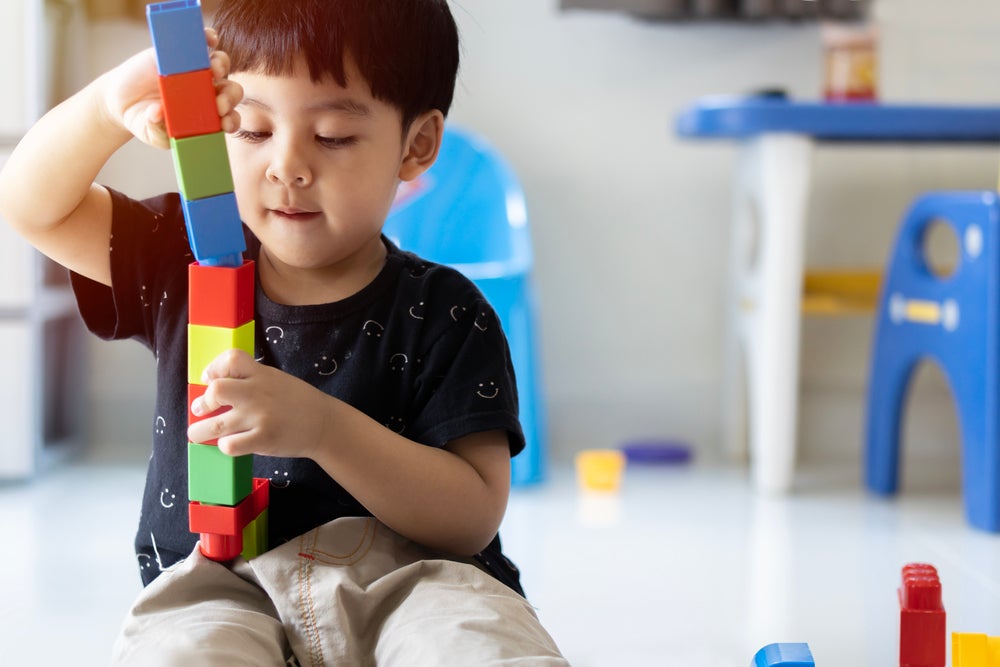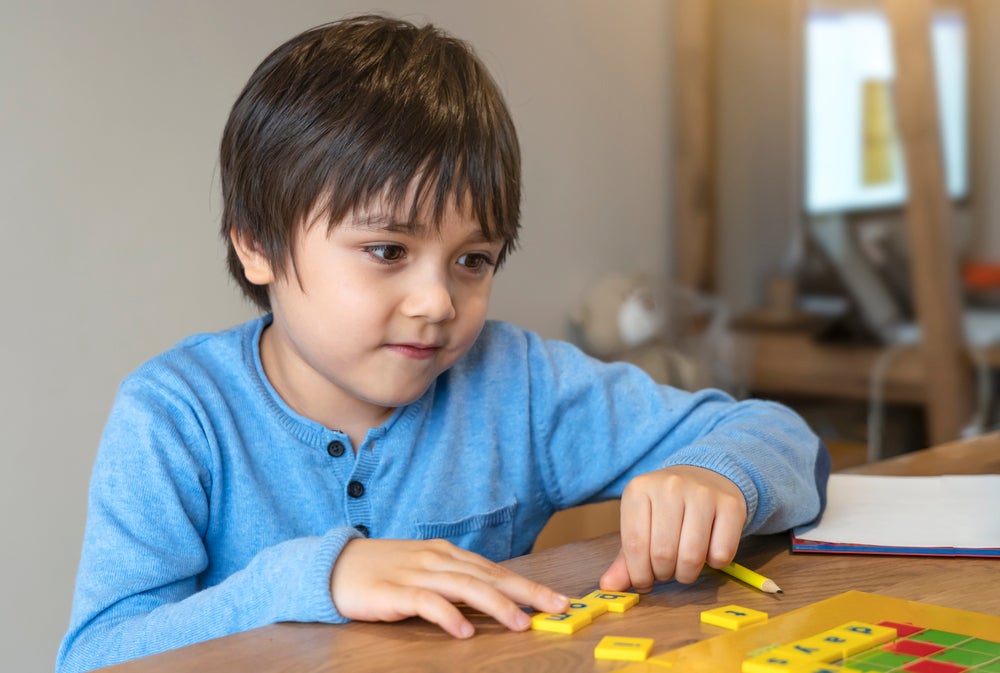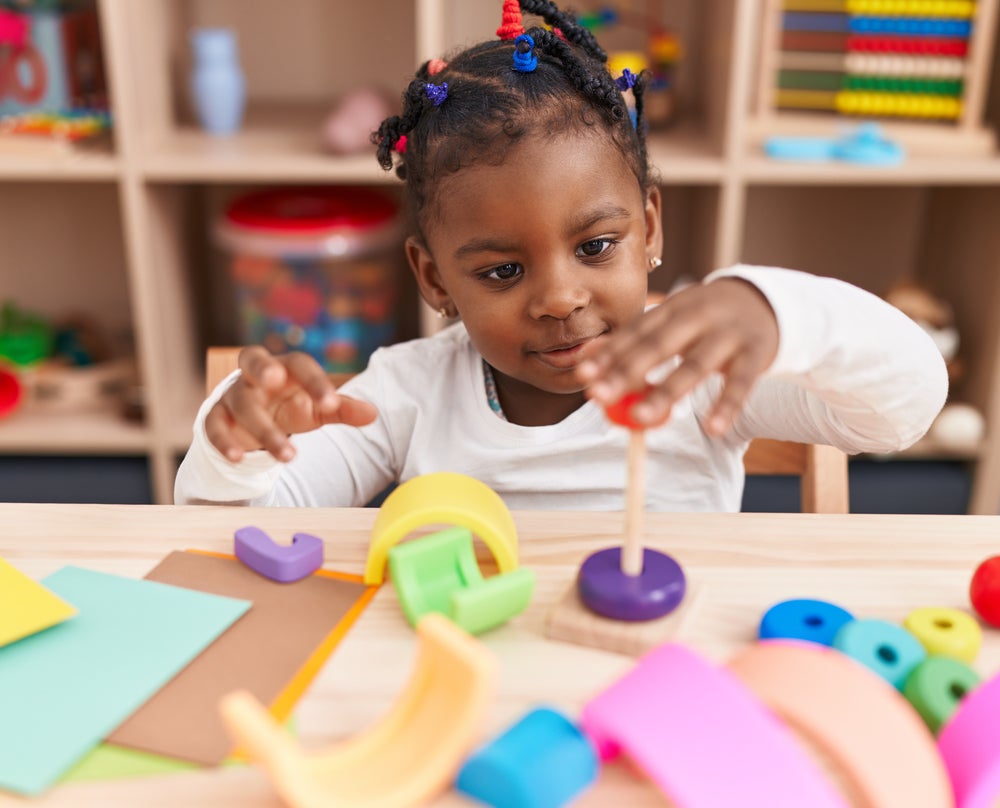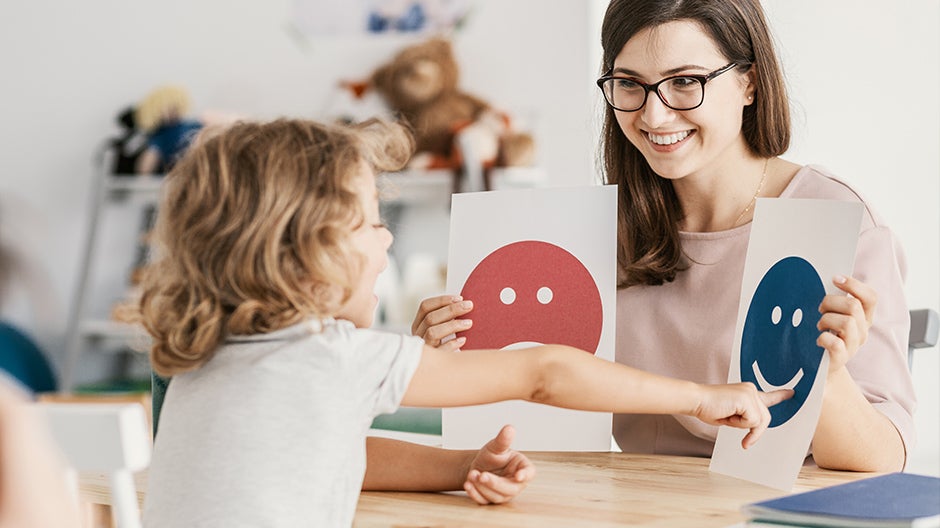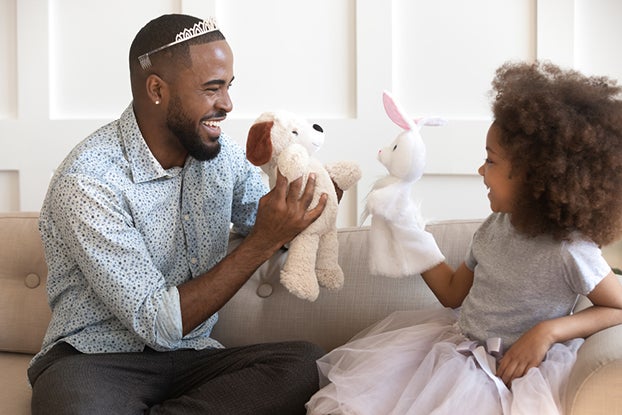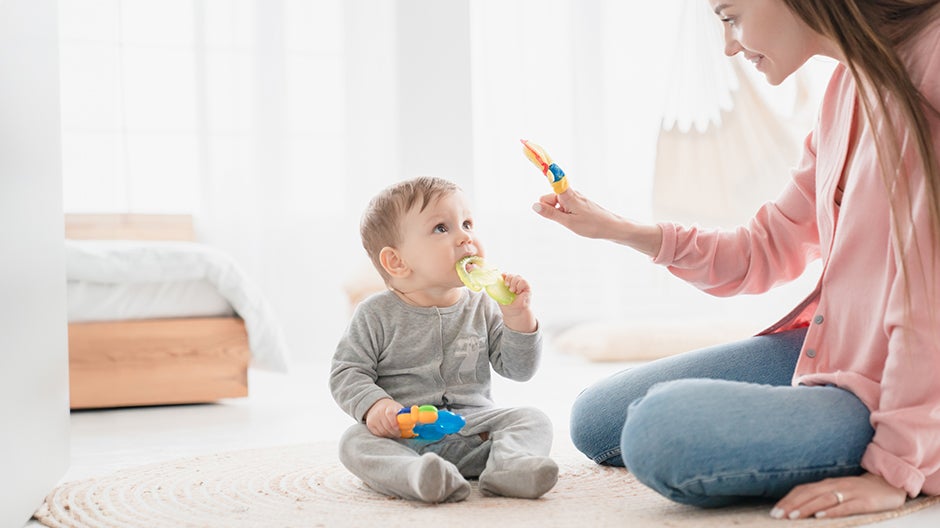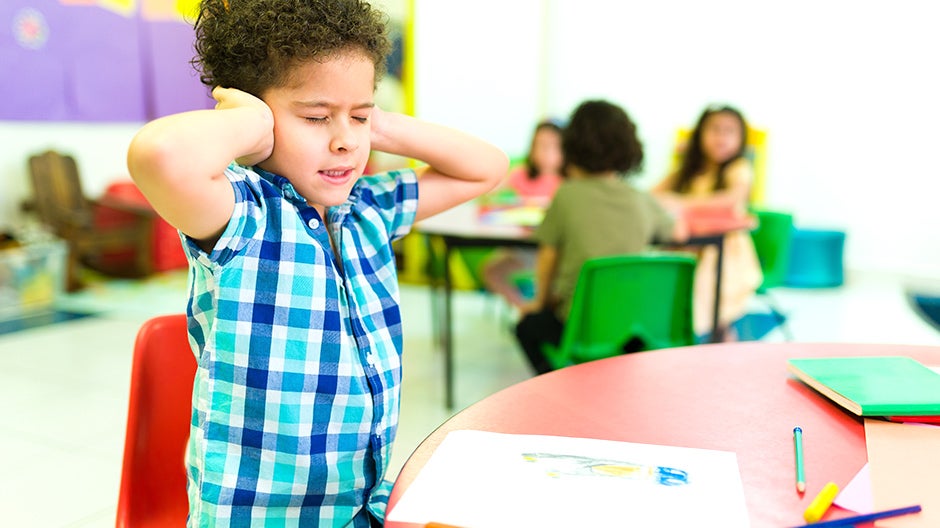Believe it or not, at age 2 toddlers are already laying the foundation for their Core Skills — one of the 5 C’s that help kids thrive in school and life. Kids start recognizing the difference between something colorful and something black and white soon after birth, and by age 2, many toddlers are ready to start learning the names of colors and shapes.
Kids with well-developed Core Skills enjoy greater academic success later in life, so figuring out how to teach toddlers the names of colors can set them up for a brighter future.
What are some fun ways to teach colors for kids? Read on for solutions from our early learning experts at Begin.
The Short Cut
- Toddlers often start learning the names of colors around age 2
- Learning what to call colors helps toddlers develop Core Skills that will help them with math and literacy when they’re older
- Parents can help teach color names by pointing out the colors of everyday objects, asking toddlers to sort objects by color, reading about colors with kids, and encouraging toddlers to make colorful art
- Most toddlers learn color names more easily if they start with the primary colors (red, blue, and yellow) and are introduced to more colors slowly over time
- A learning membership that grows with your child can help them with learning colors and other essential skills
The Benefits of Learning What to Call Shapes and Colors for Toddlers
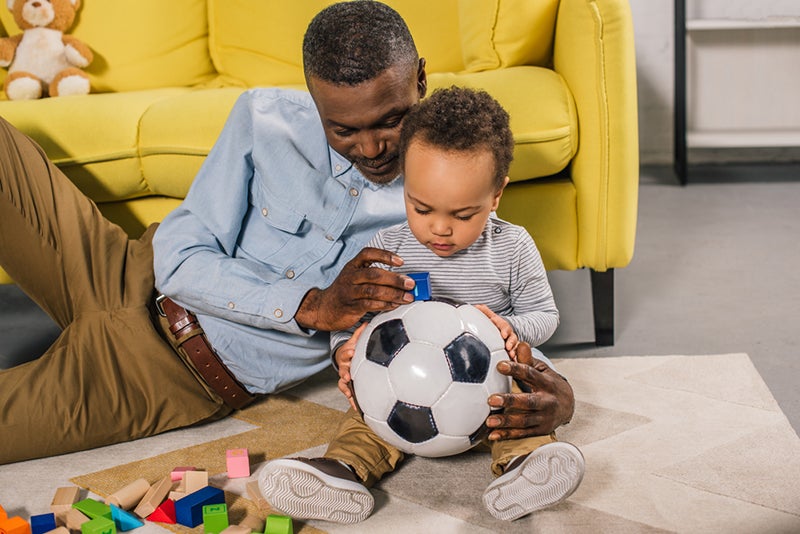
Our world is made up of different shapes and colors. Cars, houses, flowers, trees, buses, fruits, tall city buildings…everything has its own unique visual characteristics.
Before they were even a year old, your child noticed these things. At age 2, they can start piecing together the information they have about their environment and describing it.
Learning what to call colors and shapes helps toddlers develop their vocabulary, learn to sort objects into groups (green things, round things, square things, etc.), and draw connections between objects (the banana and the shirt are both yellow, the ball and the apple are both round). These are important Core Skills that lay the foundation for more advanced learning at age 3 and beyond.
Every time you introduce a child to a new color name, their brain works on processing the information. A lot of organizing, categorizing, and comparison takes place when sorting different colors and shapes. This method of examining something and identifying its attributes, such as its color, is an essential skill for math. In the future, when a child is trying to tell if a shape is an octagon or a hexagon, they’ll use the same visual skills they practiced when learning the names of colors.
Now that you’re clear on all the benefits of teaching colors for kids, let’s start helping your child learn!
6 Ways to Teach the Names of Colors for Kids
Children are often curious about new things and enjoy exploring different colors and materials. To help your toddler practice the names of colors, try these engaging activities. If you want, you can even bundle these together into larger lesson plans for toddlers on colors.
1. Finger Painting
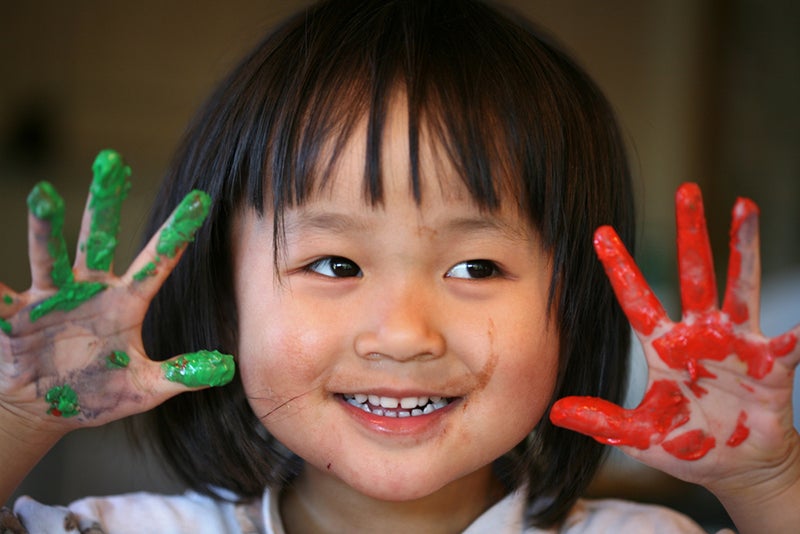
Engaging your child’s senses is one of the most effective ways to help them learn new concepts. That makes finger painting great for teaching toddlers about colors!
What You’ll Need:
- Finger paint (in primary colors)
- Finger paint paper
- Newspaper
What to Do
- Put a few pieces of newspaper on your table to protect it from spills. Then, place your child’s finger painting paper on top.
- Let them go to town using their fingers to create beautiful, colorful pictures. You can use the three primary colors and mix them up to form secondary colors (purple, green, and orange).
- During the activity, talk about the colors your child is using (“Your fingers are blue now!”) and the colors that are formed while mixing (“Look, the blue and the yellow made green!”).
- Once the painting is complete, let them tell you about what they created. Encourage them to use color words while they’re describing the artwork (“That’s beautiful! What’s this color called again?”).
2. Same Objects, Different Colors
As you teach your child different colors, they may begin associating certain colors with specific objects. For example, if you show your child a red apple, they may associate the shape of the apple with red.
When you show your child an apple of a different color (like a green one), it will help them understand that you’re referring to the color of the object, not the object itself. This activity helps you do just that.
What You’ll Need:
- Two or more objects that are the same except for their color (apples, blocks, crayons, etc.)
What to Do:
- Hand your child one of the objects and ask, “What color is this?” This will help them start thinking about colors in the world around them.
- Hand them the other object and ask them what it is. If they aren’t sure, reinforce that it’s the same type of thing as the first one, but it’s in a different color (“This is a red apple. This is a green apple.”).
- To help them further understand, sorting activities can be effective. For example, ask your child to sort the different colors of the same object (“Can you put all the red apples in a pile?”).
- As they get older, you can also encourage them to sort by the object, regardless of color (“Let’s put all the apples together!”). This will help your child continue developing categorization skills.
This can be hard work, especially for younger toddlers. So make sure to keep it playful and fun! Juggle the apples and drop them on purpose, build an apple tower and knock it over, put an apple on your head and pretend you lost it—have a good time! You don’t need to teach your toddler everything all at once. Just get them thinking about colors, and come back to the game another time to reinforce what they’ve learned.
3. Read about Colors
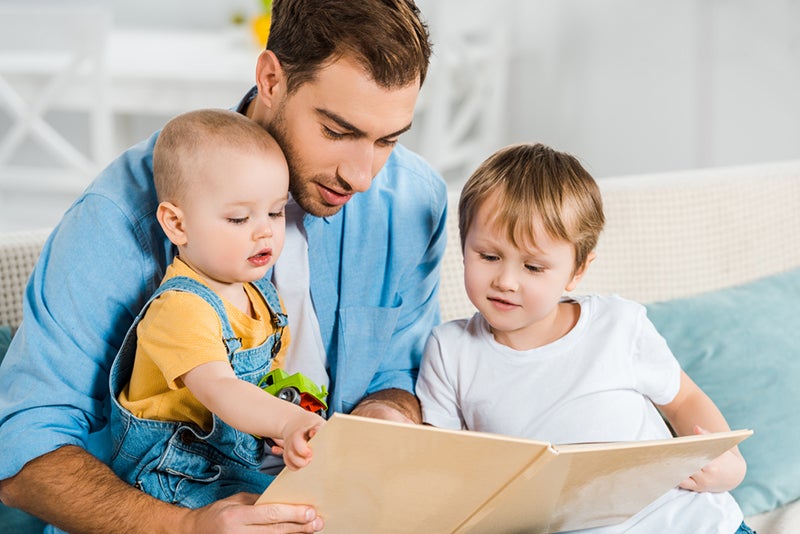
There are lots of amazing children’s books that teach about colors, but you can talk about colors while reading almost any book.
What You’ll Need:
- Books about colors (use your favorite or see our recommendations below)
What to Do:
- Grab a book about colors and read it aloud to your child.
- As you go through each page, talk about the colors you see (“This bunny is wearing a blue shirt.”).
- Then, ask your child to point to things that are different colors (“Do you see anything orange on this page?”). This helps your child learn to scan the picture and focus on particular details. As they look for one specific color, they’re practicing visual discrimination skills which they’ll use throughout their lives.
Here is a list of some great color books that will help bring fun and entertainment into learning about colors:
- Brown Bear, Brown Bear, What Do You See?
- A Color of His Own
- The Day the Crayons Quit
- Baby, See the Colors!
- What Makes a Rainbow?
4. Sing Color Songs
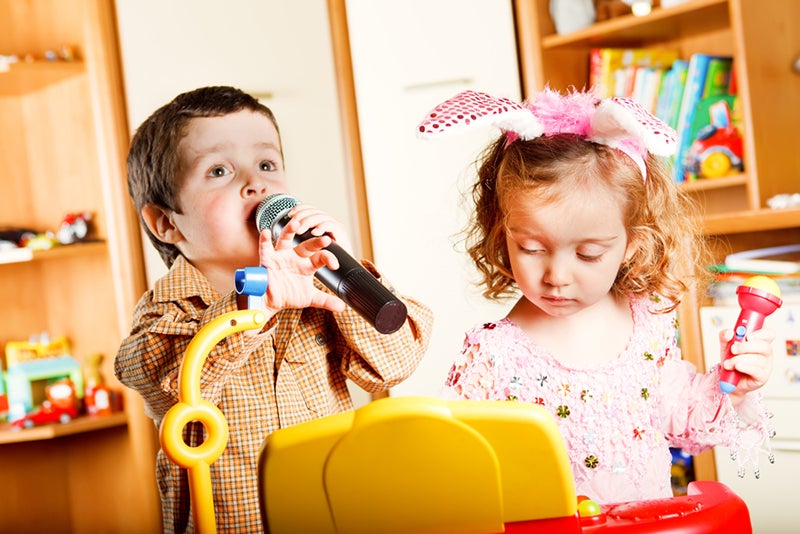
Many kids love to sing along to fun songs about colors for toddlers. You can take advantage of this natural love for music to help your child learn about colors. These silly songs are usually pretty catchy, so your child may keep singing them long after the activity ends!
What You’ll Need:
- A way to play a song for your child (such as your phone or a computer)
What to Do:
- Play a song for your child and start singing the lyrics.
- Repeat the song a couple of times to help them learn how it goes.
- Once they know the words, you can sing the song anywhere to review color names for kids on the go.
Not sure where to start? Check out this fun activity from our HOMER team that helps teach children PANTONE® colors.
You can also sing some of our favorite songs:
- “It’s Not Easy Being Green” by Kermit the Frog
- “The Color Song” by Bryant Oden
- “Colors of Our Clothes” by David Burba and Lisa Campbell
- “Colors All Around” by Jack Hartmann
- “Jenny Jenkins” by Lisa Loeb
- PANTONE Colors: The Song
You can find these songs on YouTube, or search our HOMER app. Happy singing!
5. Make a Paper Picture
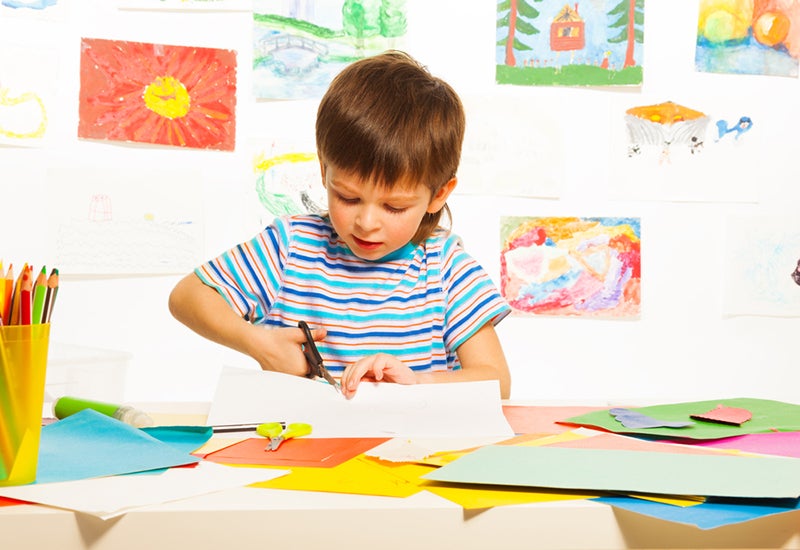
This activity is perfect for a rainy day. It’s a fun way to encourage Creativity (another of the 5 C’s) and practice fine motor skills while working with paper.
What You’ll Need:
- Construction paper in multiple colors
- Child-safe scissors
- Glue or tape
- A white sheet of paper
What to Do:
- The parent should start by cutting the construction paper into strips of different colors. The strips can all be the same width, or you can mix them up.
- Once you have a nice pile of colorful strips, invite your child to glue or tape them onto the white sheet of paper to create a design of their choice.
- When they’re done, talk to them about their colorful picture. They may need you to describe the picture for them or ask simple yes or no questions (“Did you put the orange strips over here?”). And even if they can respond to a more open-ended question (“Which colors did you use?” or “What did you put in the picture?”), don’t be surprised if their description doesn’t make total sense! They’re learning and practicing, and the more they do, the better they’ll get.
- You can mix things up the next time you do this activity by using circles, squares, or various shapes at once instead of strips.
6. Design a Color Scavenger Hunt
This activity is perfect for kids who love to move around. It’s also a great way to get them thinking about colors. This activity works best for older toddlers.
What You’ll Need:
- A sheet of blank paper
- Colored pencils or crayons
- A pencil or pen
- A basket or bag
What to Do:
- Create a scavenger hunt for your child by drawing boxes on a blank sheet of paper with colored pencils or crayons. Fill in each box with the color it represents to make it easy for your child to identify it.
- Quickly review the colors with your child. Point to each box on the sheet and have them tell you the name of the color.
- Then, challenge them to find an object around the house for each color. Once they find something, have them put it into the basket or bag. Next, show them how to use the pencil or pen to put an X or a check through the color box they found.
- Have them continue searching for items until they have a basket or bag full of colorful objects. Once they’ve finished, do a show and tell and ask them to tell you the color of each thing they found!
3 Things to Remember When Teaching about Colors to Toddlers
It can be challenging for a toddler to learn the names of colors. There are many colors constantly around us, and learning the difference between ones like “pink” and “red” isn’t easy! Plus many different shades of one color exist. There are many reds (think: maroon, crimson, scarlet, etc.), but in order to avoid overloading kids, we ask a toddler to call them all “red.” This can be tricky.
Have no fear! We’re here to help. The following are some basic tips to keep in mind as you help your young learner.
(Note: If your child has trouble distinguishing colors by age 4, check in with their pediatrician or eye doctor to rule out color vision deficiency at your next check-up. It’s rare for someone to be completely color blind, but some people’s eyes struggle to see the difference between certain colors. This can make school more difficult—unless the teacher knows and can adapt.)
1. Start with the Basics
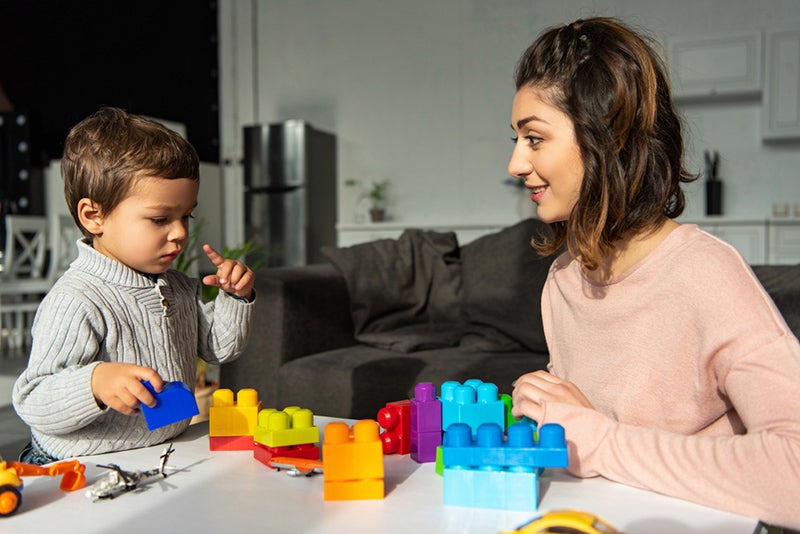
Like older children (and adults!), toddlers learn best when you start with the basics. That means beginning by teaching the names of the primary colors (red, blue, and yellow). Once your child gets comfortable with these, move on to other hues.
You can start by emphasizing the primary colors in your everyday life:
- When you’re having dinner: “Do you want to use this blue plate?”
- When you’re going for a walk: “Look at that yellow car!”
- When it’s time to play: Hand them only red, blue, and yellow objects. If they have building blocks, ask them to sort the blocks into red, blue, and yellow piles.
Once your child is familiar with naming the primary colors, you can move on to other basic colors, such as green, orange, purple, black, white, brown, and gray. Making a color-mixing sensory bag lets kids practice naming colors and discover what happens when you combine them.
2. Teach Contrasting Colors for Kids
Because some shades of different colors are so similar (light red and pink, dark blue and purple), it’s easier for kids to learn the names of colors if you pick ones that strongly contrast when you’re playing with them.
For example, if a set of blocks contains a dozen colors, pick two or three that are very different (like white, black, and red) when you first ask your child to sort them. You can move on to more subtle differences after they become proficient with the easier ones.
3. Help Them See Color Categories
Once you’re confident that your child knows what to call basic colors, you can start introducing the names of similar colors (light green, dark green, etc.). Most of these can be found in the world around you.
To help your child group colors into categories, point out an object and name its color. For example, point to the grass and say “This is light green.” Then point to a darker shade of green on your sock and say “But my sock is dark green.” Then ask them to find other things that are the same color: “Can you find anything else that’s dark green?”
When they find another object, talk about what you notice. Is the green the same or are there differences? Is one green lighter or darker than the other? Does either look like a brighter green?
These simple conversations can help your child as they begin expanding their definition of the color green.
Make Every Day a Colorful Day
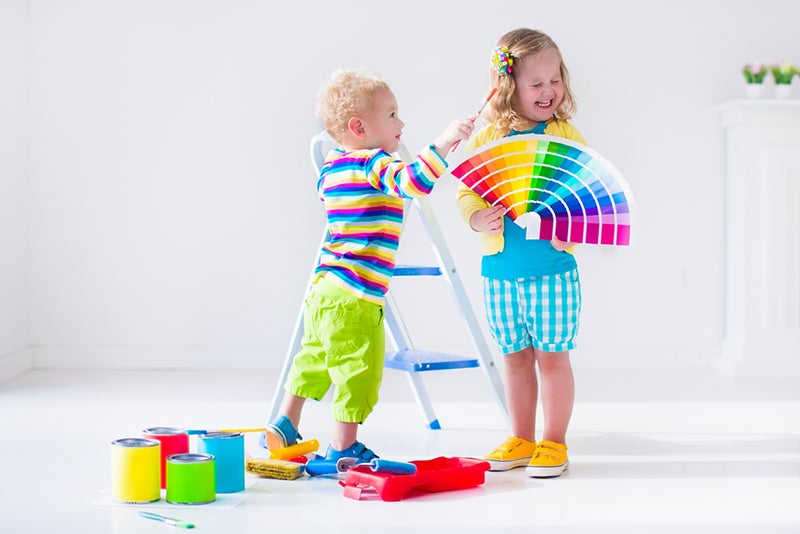
Learning the names of colors isn’t just one of the most essential Core Skills for toddlers—it’s also one of the most fun! From finger painting and making squishy sensory bags to singing about colors in the award-winning HOMER app from Begin, the opportunities for combining play and learning are endless.
Start with the names of the primary colors (red, yellow, and blue), and gradually introduce more. Point out colors in your daily life. And remember to be patient, celebrate successes, and play with your kids while they learn. Before you know it, your young learner will recognize all the colors of the rainbow—and so many more!
And for more help from the experts at Begin, take our quiz to see how our membership can help your family today!
